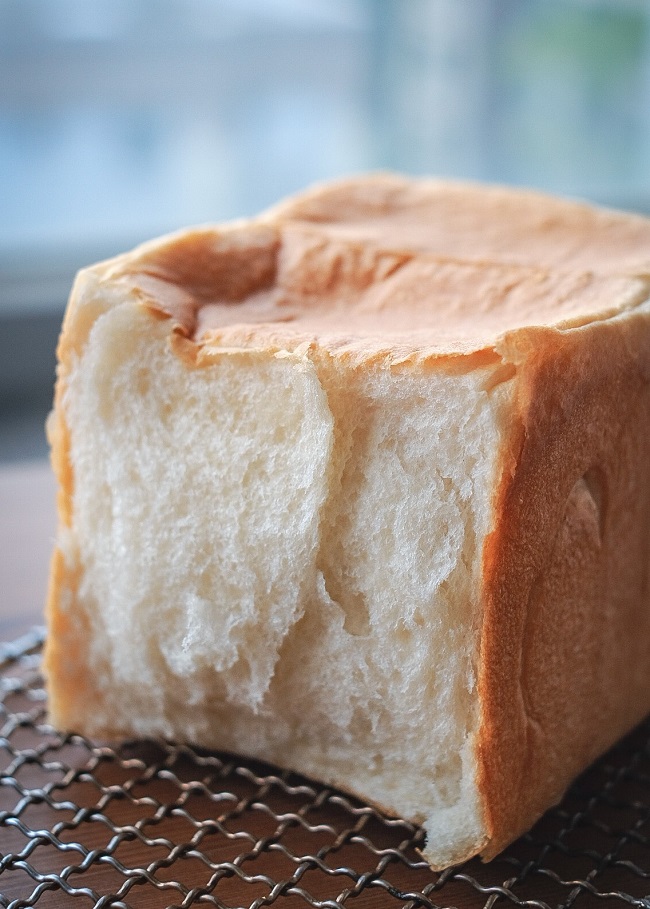Recipe in English below.
Après une dizaine d’essais et de réajustements, je suis fière de partager ma recette ultime du « Shokupan », ou tout simplement en français Pain de mie japonais.
Mais qu’y a-t-il de si spécial dans ce Shokupan par rapport au pain de mie que l’on connait? Il est SI MOELLEUX. Le Shokupan se distingue par sa mie ultra moelleuse, filante et cotonneuse qui vous donne l’impression de manger un nuage…! ふわふわ

J’ai testé plusieurs recettes de Shokupan et de ses variantes (par ex. Hokkaido Milk bread) – avec ou sans œufs, avec crème liquide ou juste du lait, en changeant les quantité d’eau/farine etc. Et j’ai ENFIN trouvé LA recette avec les ingrédients qu’il faut et surtout le taux d’hydratation parfait pour avoir le résultat attendu.
Le secret (pas si secret que ça en fait) pour avoir ce résultat est tout d’abord dans l’utilisation d’un « tangzhong » qui s’obtient en chauffant de la farine avec 5 fois son poids en eau jusqu’à atteindre une texture de crème pâtissière. Puis laisser reposer une nuit et l’incorporer lors du pétrissage de la pâte le lendemain.
Ma deuxième astuce est de mélanger de la crème liquide entière avec le lait. Je trouve que cela donne une bonne élasticité à la mie et un nettement meilleur goût. Et je ne mets pas d’œufs dans ma pâte car je trouve que cela rend le pain trop brioché et moins moelleux (à mon avis). Pour la farine, je me procure de la farine à pain japonaise qui marche très bien pour ce pain de mie, mais à défaut la T45 est très bien aussi.
POUR 1 SHOKUPAN (moule de 20 cm) :
INGRÉDIENTS:
Pour le tangzhong:
- 15g de farine
- 70g d’eau
Pour la pâte:
- 130g de lait tiède
- 2.5g de levure sèche (j’utilise la levure sèche instantanée SAF gold qui est adaptée aux pâtes sucrées)
- 250g de farine (T45 ou T65)
- 20g de crème entière liquide
- 10g de lait concentré sucré
- 15g de miel (vous pouvez en mettre moins si vous aimez votre pain de mie pas très sucré)
- 25g de sucre
- 3g de sel
- 20g de beurre doux mou
- le tangzhong (à température ambiante)
PRÉPARATION DU TANGZHONG:
- Mettre l’eau et la farine dans une casserole.
- Chauffer le mélange à feu doux tout en remuant avec une spatule
- Quand la crème commence à épaissir et avoir une texture de crème pâtissière/béchamel, couper le feu (ne pas faire bouillir surtout).
- Mettre dans un bol filmé et laisser reposer au frais la nuit (ou au moins 6h).
PRÉPARATION DE LA PÂTE:
- Dans un cuve du robot (ou dans un bol si pétrissage à la main), délayer le lait tiède et la levure.
- Ajouter la crème entière liquide, le miel, et le lait concentré. Mélanger rapidement.
- Ajouter la farine, le sel, le sucre et le tangzhong.
- Pétrir pendant 10 min.
- Ajouter le beurre mou et continuer de pétrir pendant encore 10 min. A la fin du pétrissage, la pâte doit être élastique et lisse, et doit pouvoir se décoller des parois.
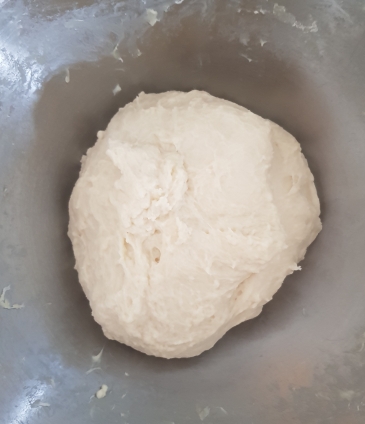
- Bouler la pâte, recouvrir le bol d’un linge humide et laisser pousser pendant environ 1h.(jusqu’à que la pâte double de volume – le temps de pousse va dépendre de la température ambiante, chez moi 1h suffit amplement. Pour accélérer la pousse, vous pouvez également mettre une casserole d’eau bouillante dans un four et laisser pousser la pâte dans le four éteint.)
- Au bout de la 1ère pousse, dégazer la pâte (en donnant un bon coup à la pâte).
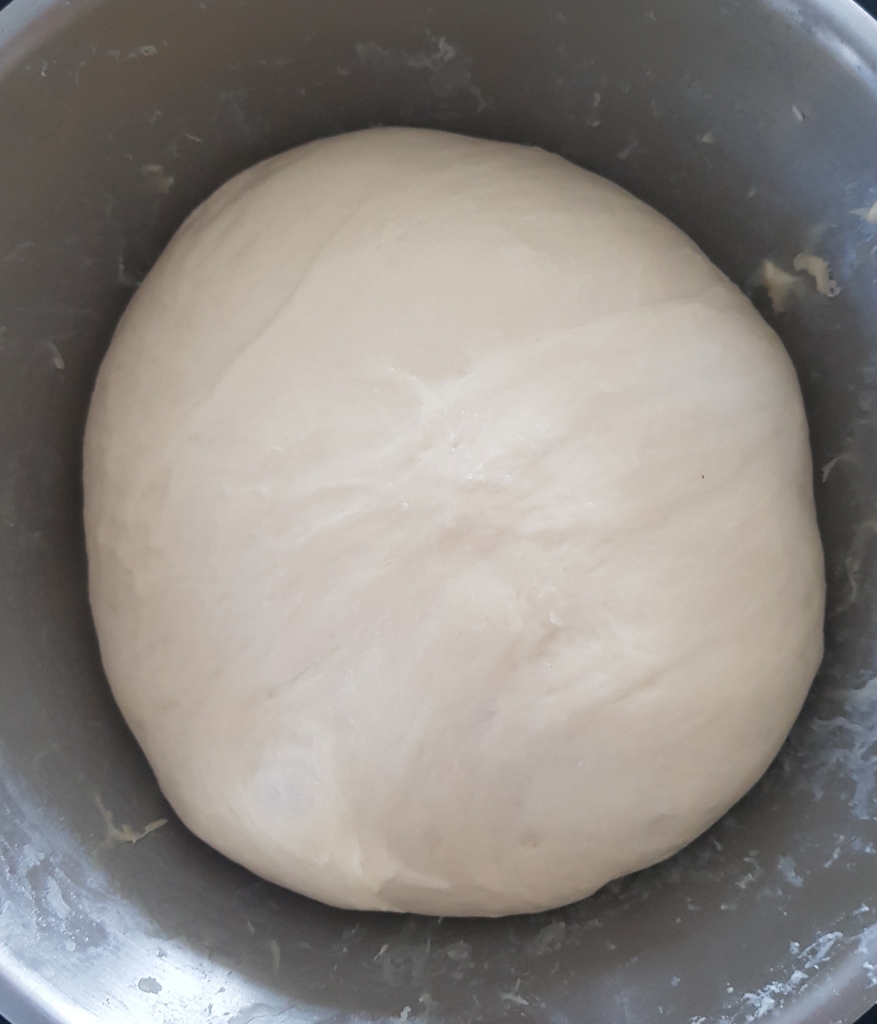
- Peser la pâte et couper 3 pâtons de même poids (se fariner les mains si la pâte est trop collante).
- Déposer les pâtons en boule sur le plan de travail fariné.
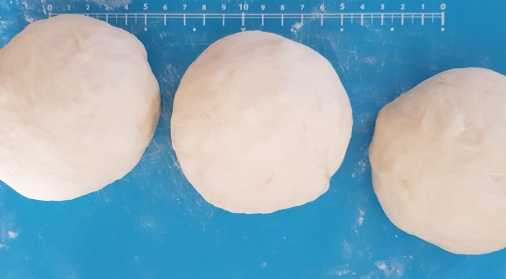
- Abaisser chaque pâton pour obtenir une forme (quasi) rectangulaire.
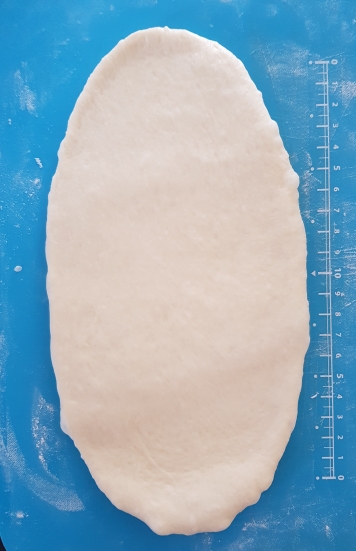
- Rabattre le haut, puis le bas.
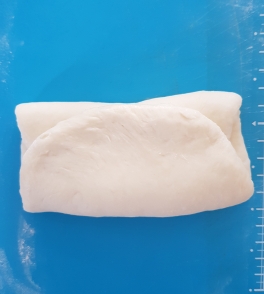
- Pivoter d’un quart de tour, étaler la pâte en longueur, et rouler le pâton.
- Déposer les pâtons roulés dans un moule légèrement beurré ou huilé.
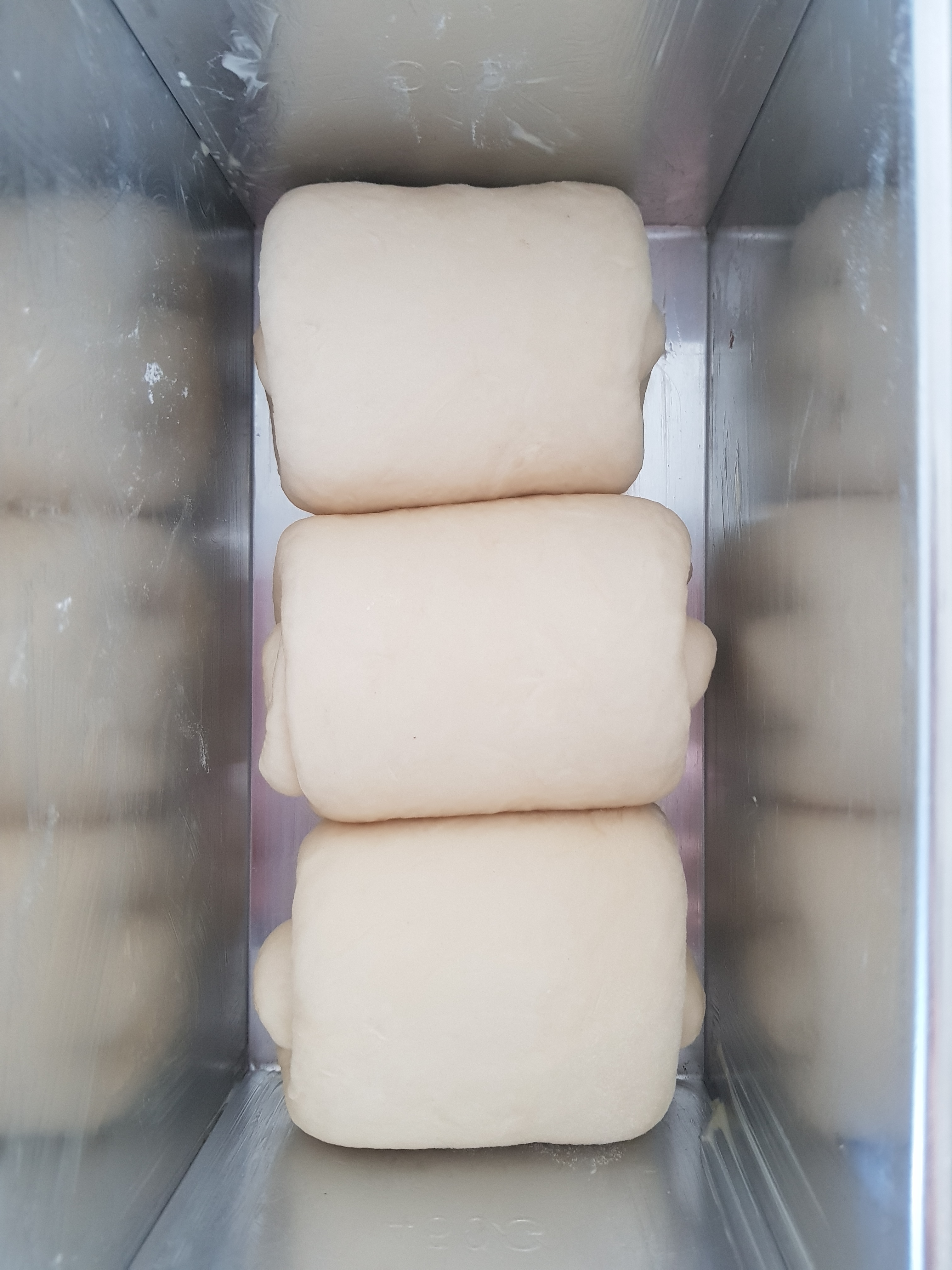
- Laisser pousser 1h30-2h environ, jusqu’à ce que la pâte arrive en haut du moule (un peu moins si vous utilisez comme moi un moule à pain de mie qui se referme avec un couvercle).
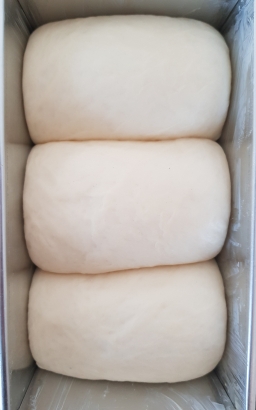
- Préchauffer le four à chaleur tournante à 170°C.
- Enfourner pendant 30 min.
- Démouler le pain et laisser refroidir sur une grille.
Résultat: Une mie filante qui se « déchire » comme du coton…!
Recipe in English
After multiple attempts, I am finally proud to share my own « Shokupan » recipe, aka Japanese loaf bread.
What is so special about Shokupan comapred to other loaf breads? It is sooo SOFT. The crumb is so fluffy, pillowy and bouncy at the same time.. ふわふわ

I’ve tested different recipes for Shokupan and Hokkaido milk break – with or without eggs, with water or with heavy cream, by adjusting the water to flour ratio etc. And I’ve finally perfected my recipe with the GOLDEN RATIO. I’ve been using the same recipe since then and I’m always super happy with the results!
The secret (not that secret though) to get this fluffy texture is to use a tangzhong. Tanzghong is a mixture of heated flour and water with a 1 to 5 ratio.
My second tip is to mix a bit of heavy cream with the milk. It gives a good bouncy texture and adds to the taste as well. For the flour, I use a premium grade Japanese bread flour which works the best for Shokupan but any bread flour works as well.
For 1 SHOKUPAN (20cm tin loaf) :
INGREDIENTS:
Ingredients for the tangzhong:
- 15g bread flour
- 70g water
Ingredients for the dough:
- 130g lukewarm milk
- 2.5g dry yeast (I use SAF instant yeast ‘Gold’ which is made for sweet dough)
- 250g bread flour
- 20g heavy cream
- 10g condensed milk
- 15g honey
- 25g sugar (I like my bread a bit sweet. You can choose to put less sugar if you prefer)
- 3g salt
- 20g soft butter
- Tangzhong
TANGZHONG:
- Mix the flour (17g) and water (77g) in a saucepan
- Heat the mixture over low heat while stirring.
- When the mixture starts becoming creamy, turn off the heat.
- Transfer to a small recipient and let it rest for 6hours or overnight in the refrigirator.
DOUGH:
- Pour the lukewarm milk and yeast into a stand mixer bowl
- Add the heavy cream, honey and condensed milk. Mix.
- Pour the flour, sugar, salt, and tangzhong.
- Knead for 10 min.
- Add the soft butter and knead for another 10 mins. The dough should be elastic and smooth.
- Roll the dough round in the bowl, cover with a wet cloth, and let it rise for about an hour, an hour and half (until double the size).
- After the rise, punch the dough to remove the gas,

- Cut the dough in 3 equal parts and roll them.

- Roll out each dough to a rectangle shape with a rolling pin.

- Fold the dough from the top end, then fold the bottom end.

- Rotate the dough 90 degrees and roll it from one end.
- Place the rolled dough in a greased tin. The fold should be at the bottom side (picture below)

- Cover it with a wet cloth and let the dough rise for about 1.30-2 hours or until the dough rises to almost the size of the bread tin.

- Start to preheat the oven to 170°C .
- Bake the dough for 30 minutes.
- Remove the bread from the tin and cool it down on a rack.



